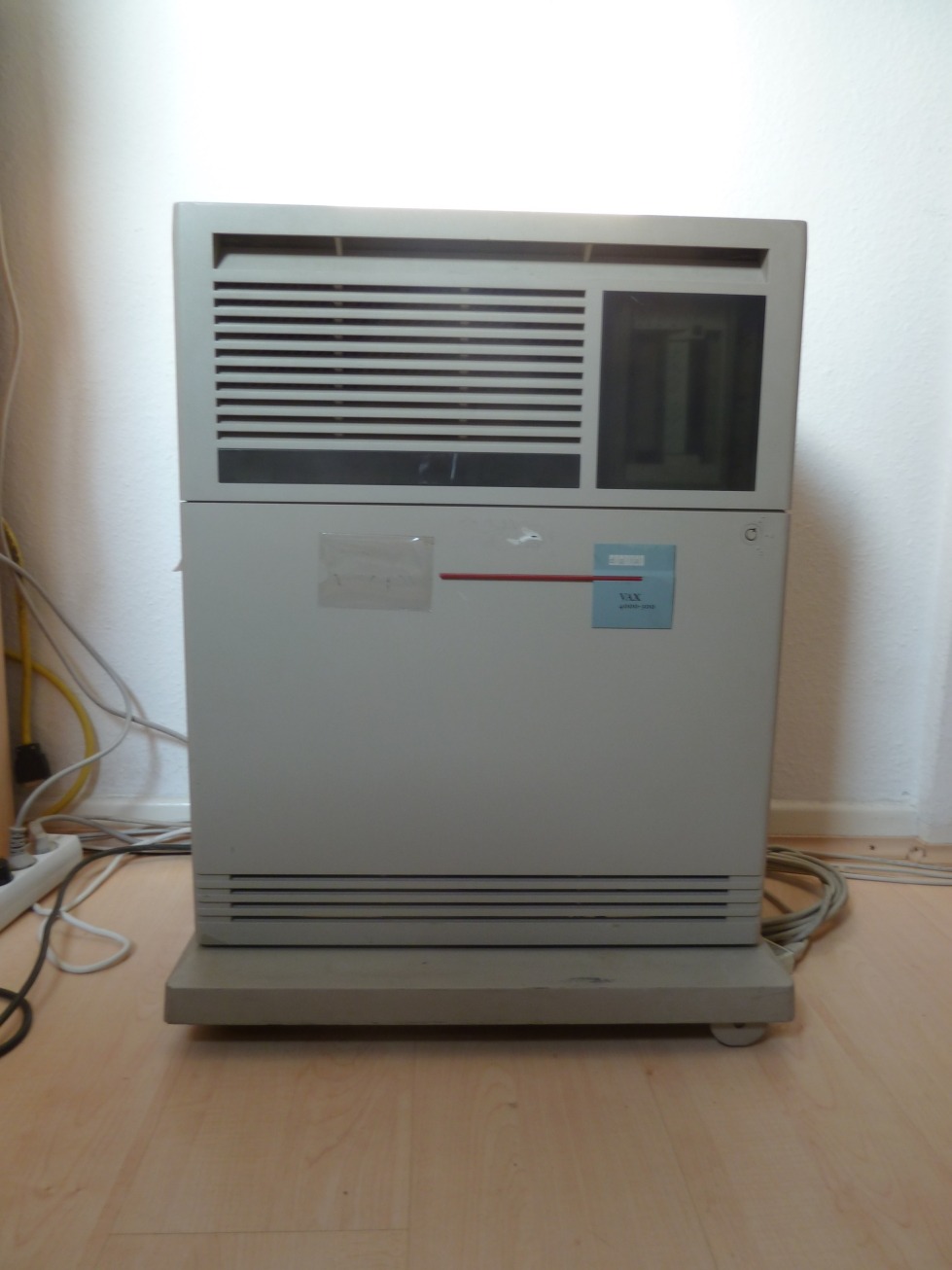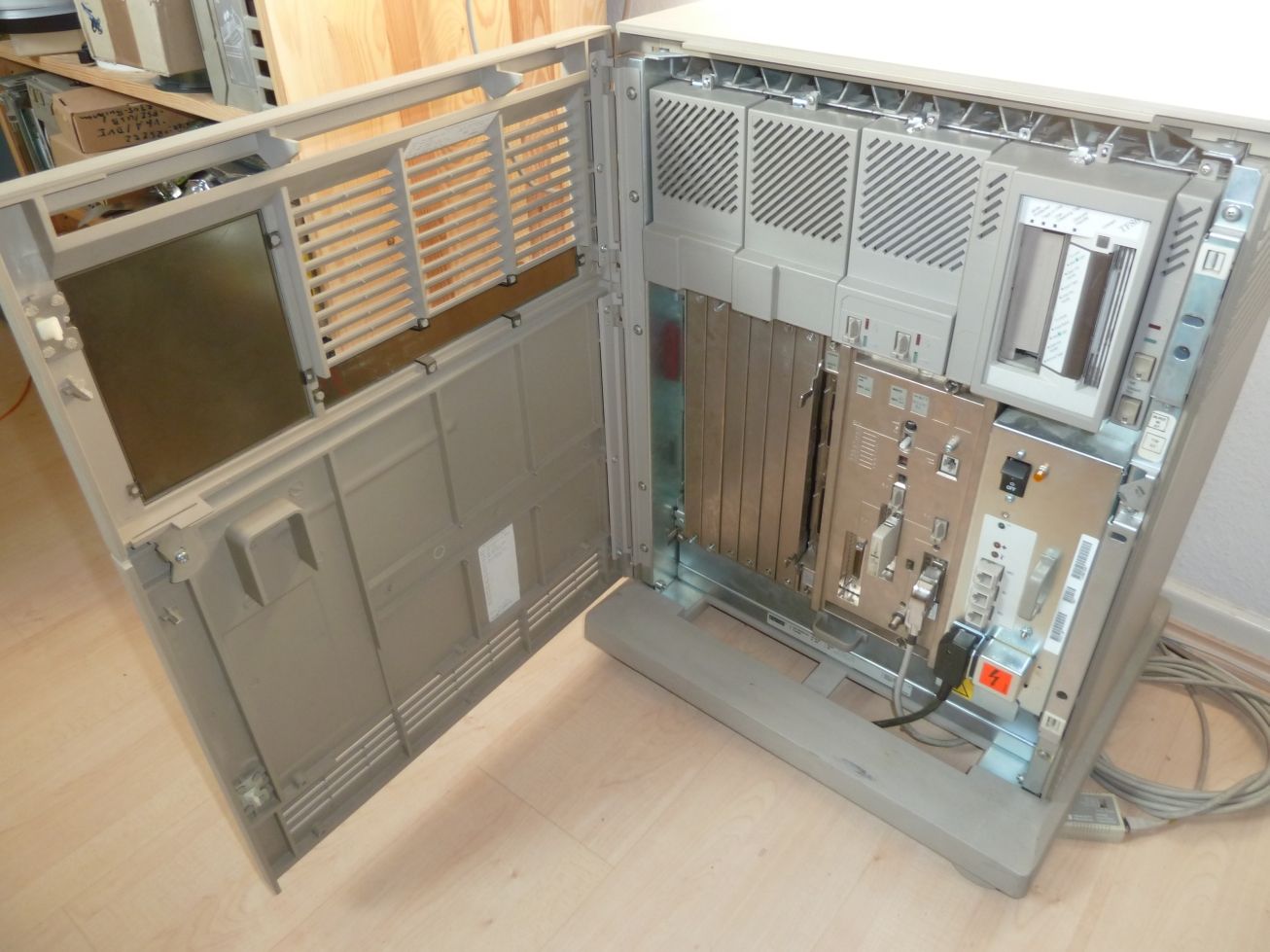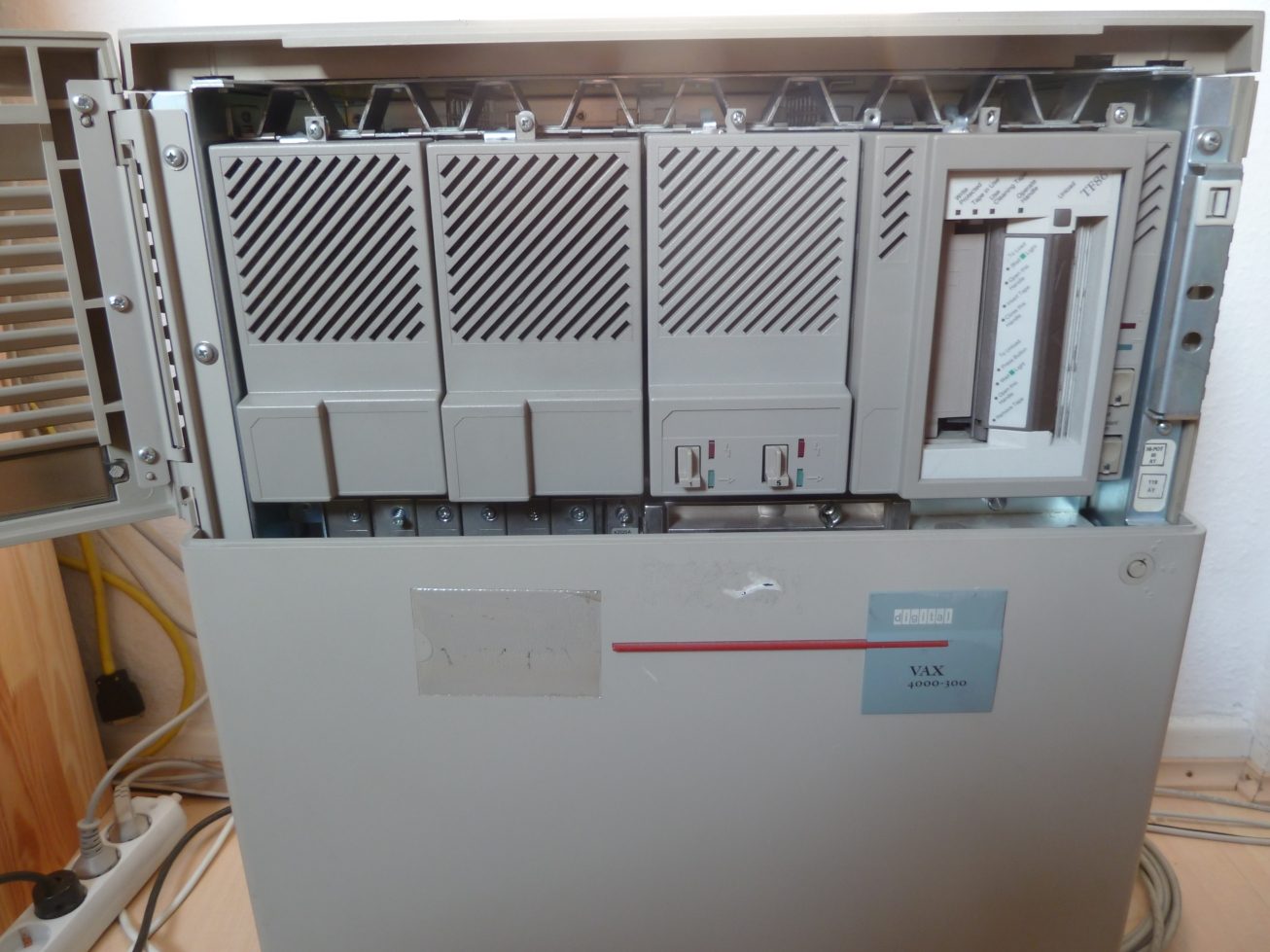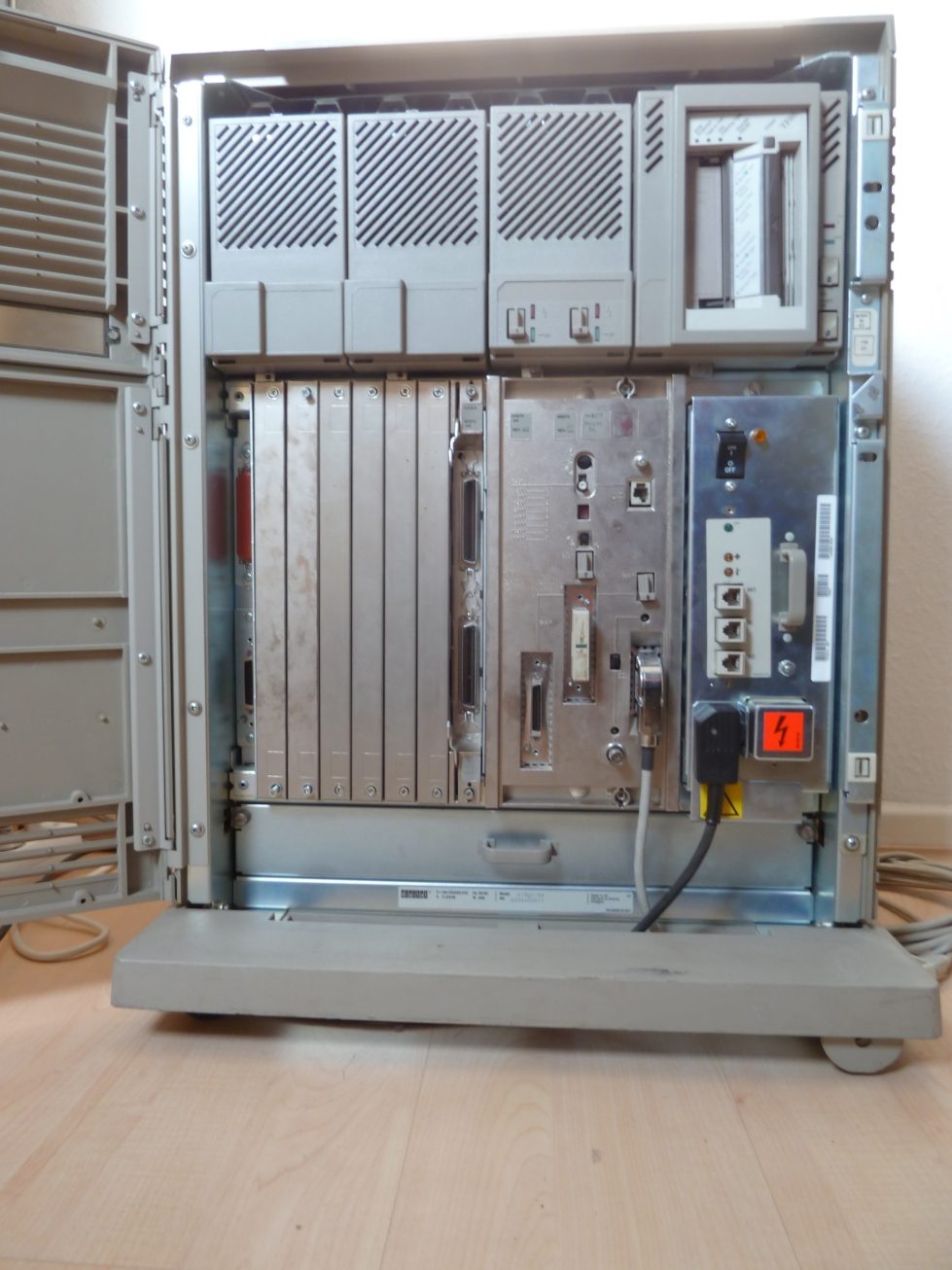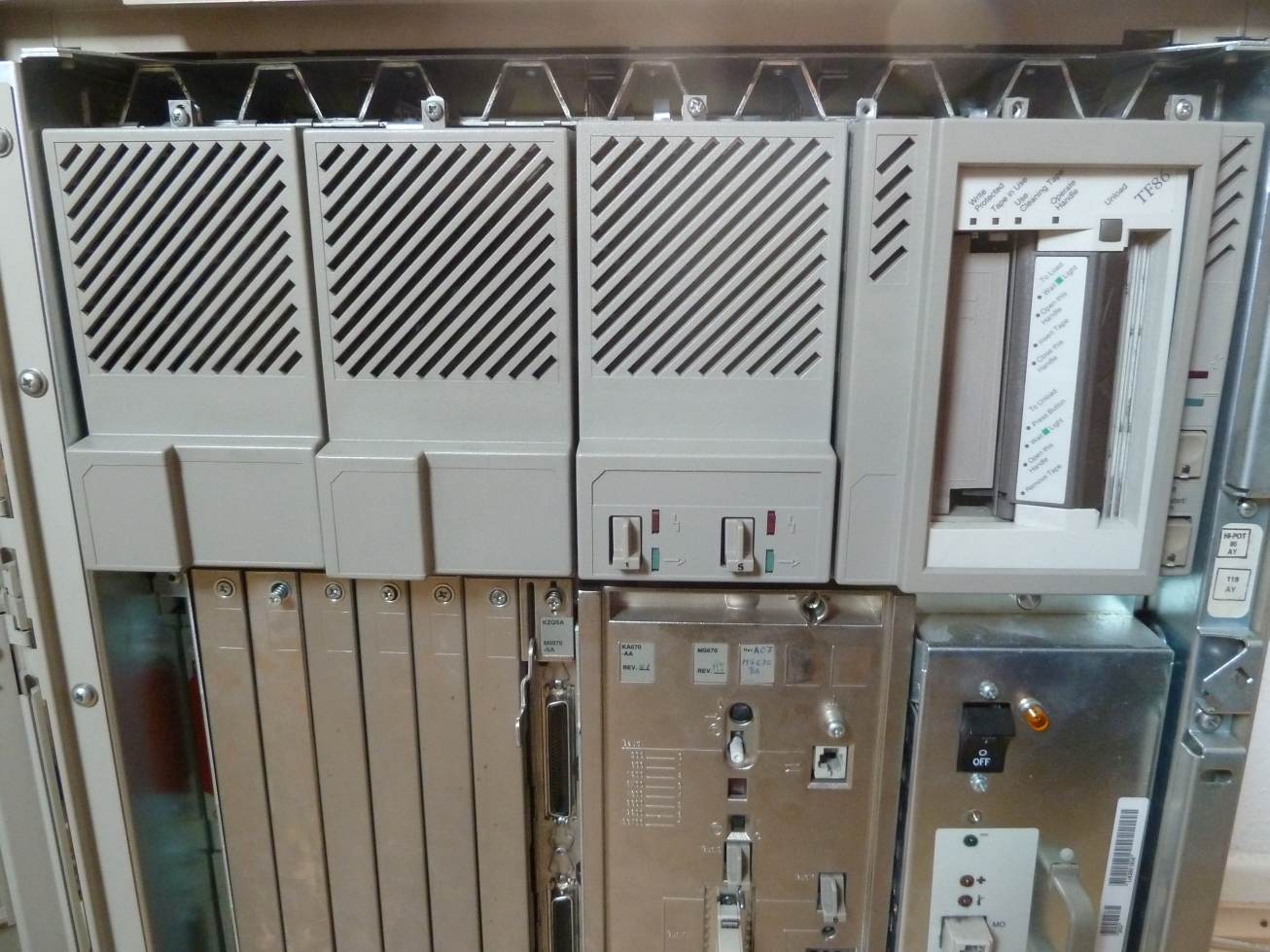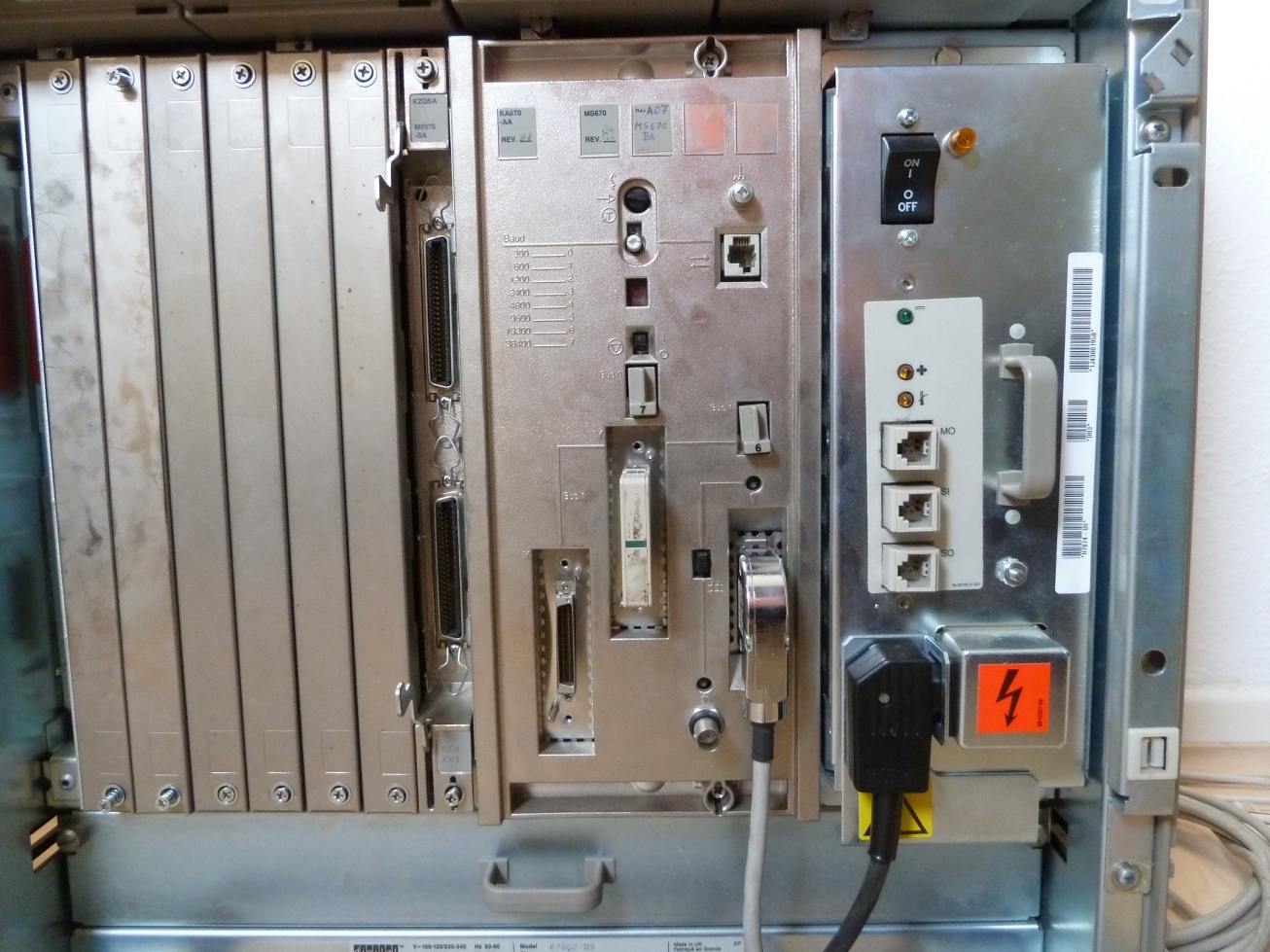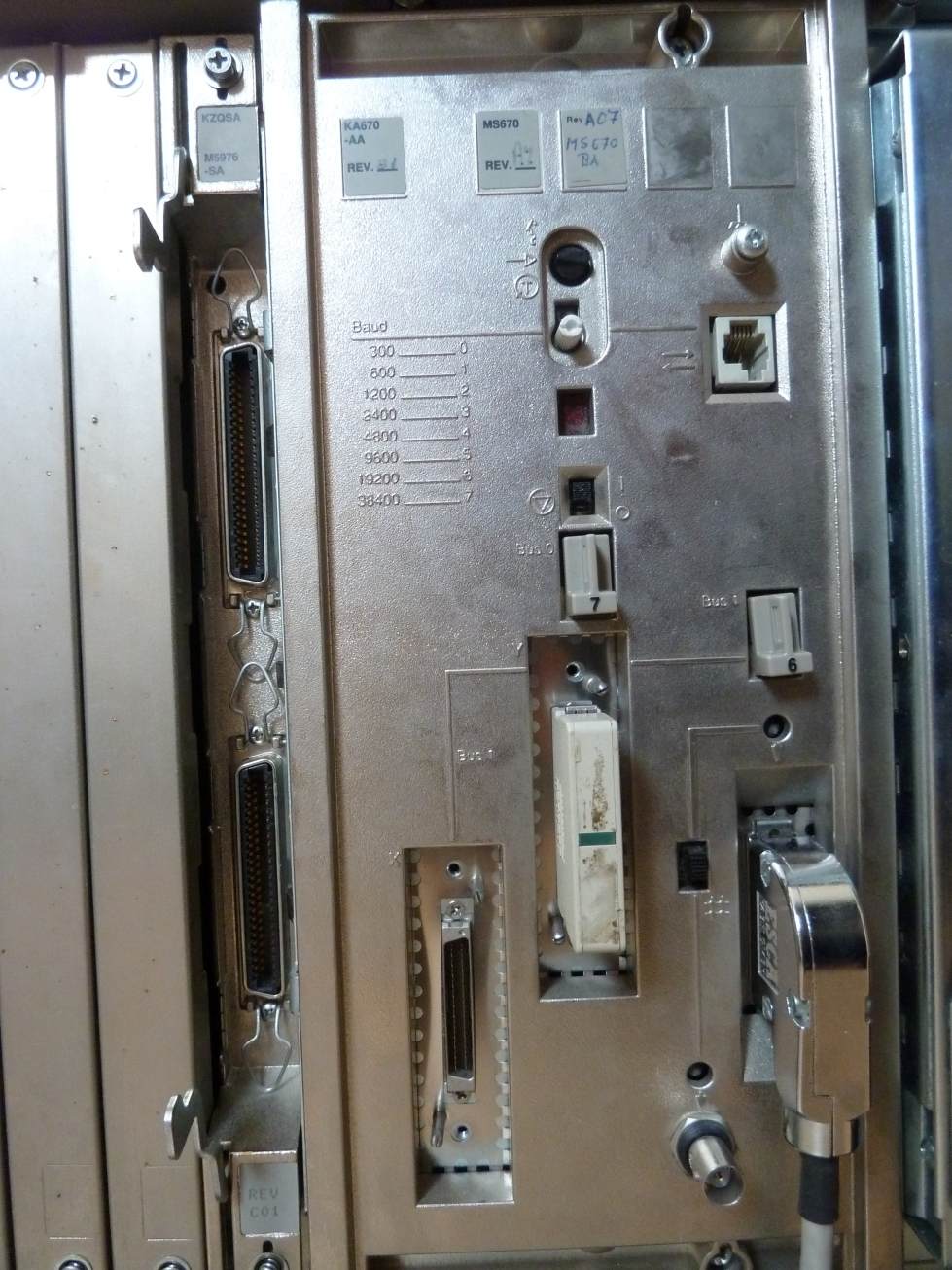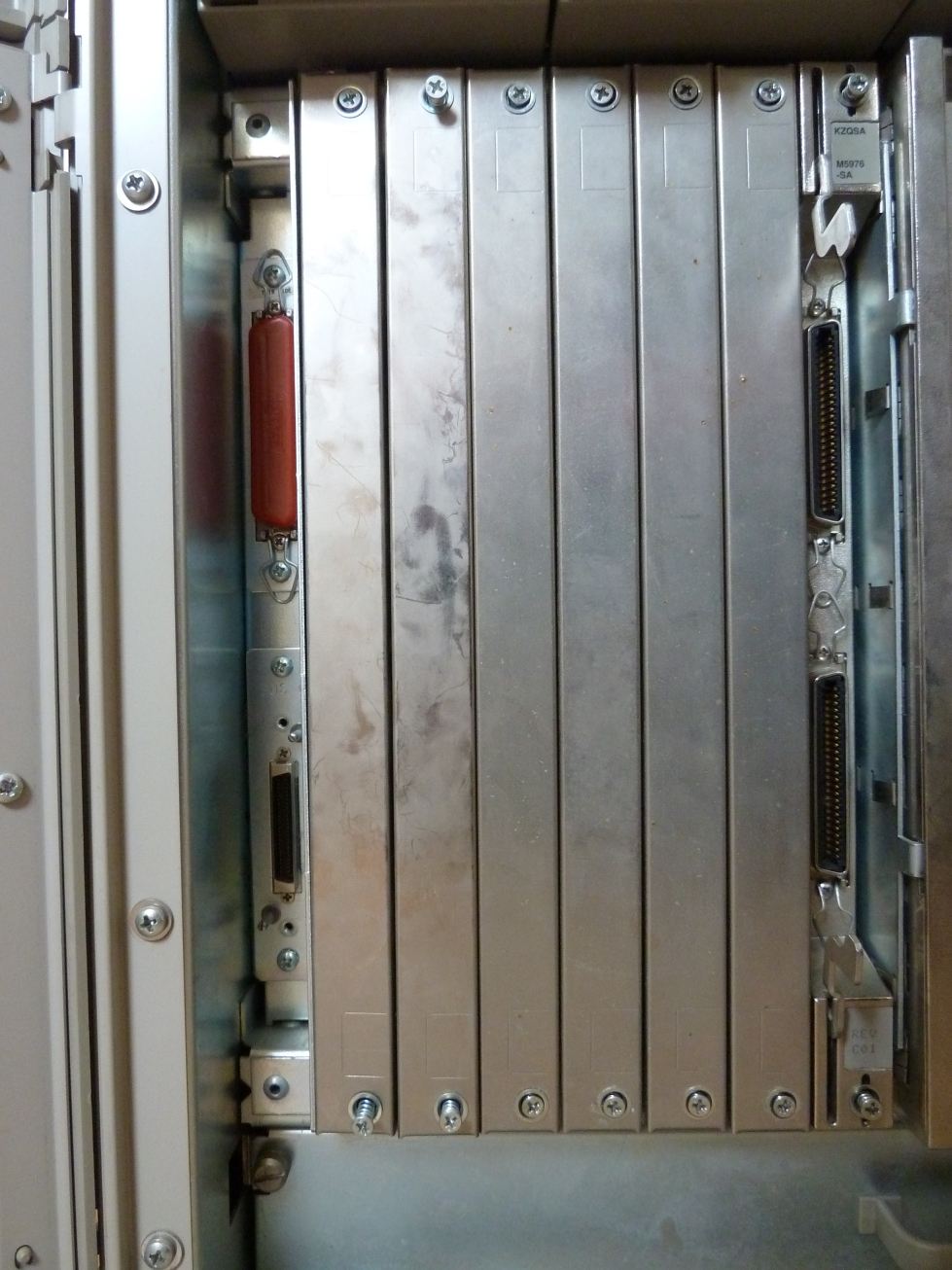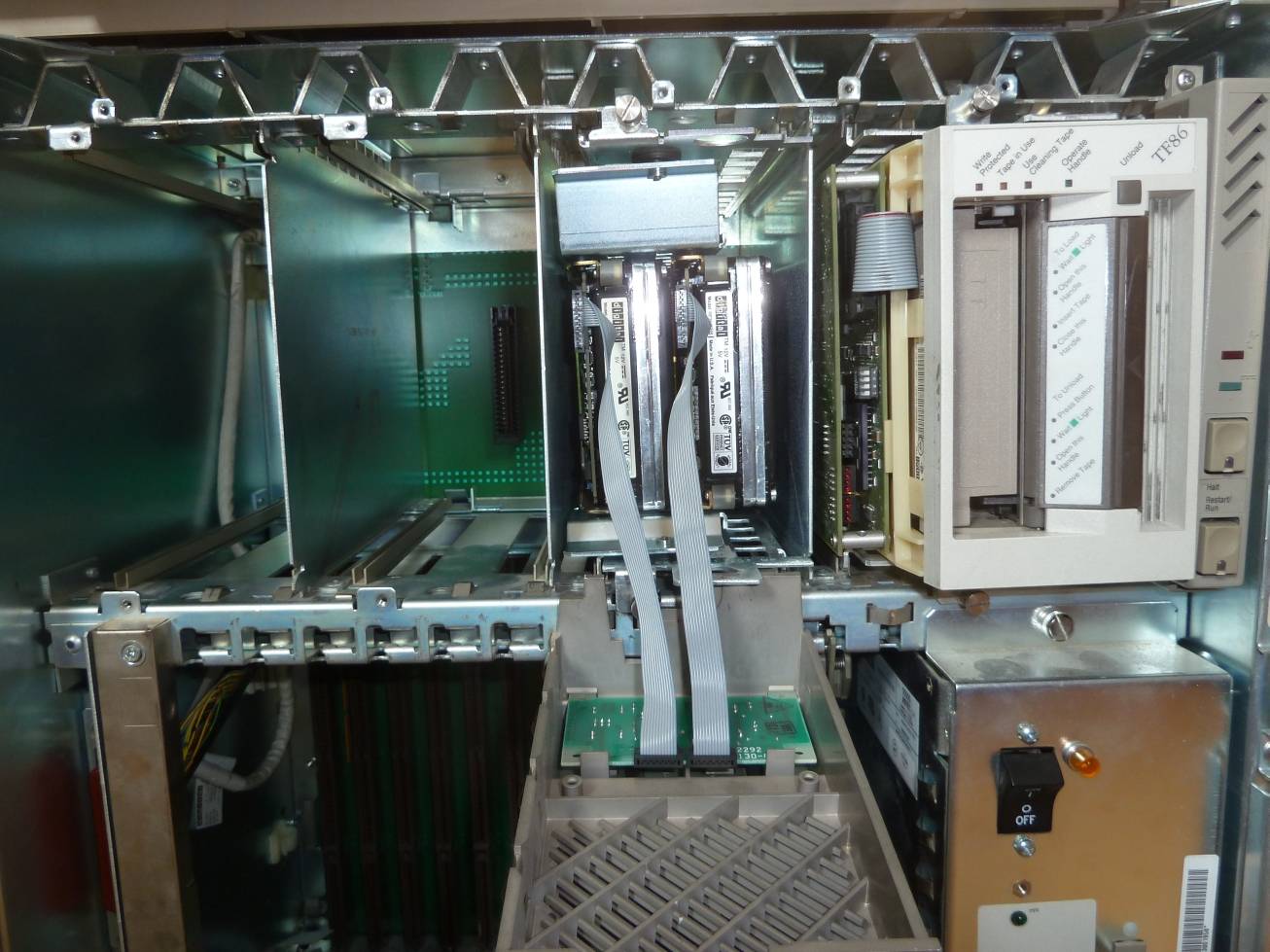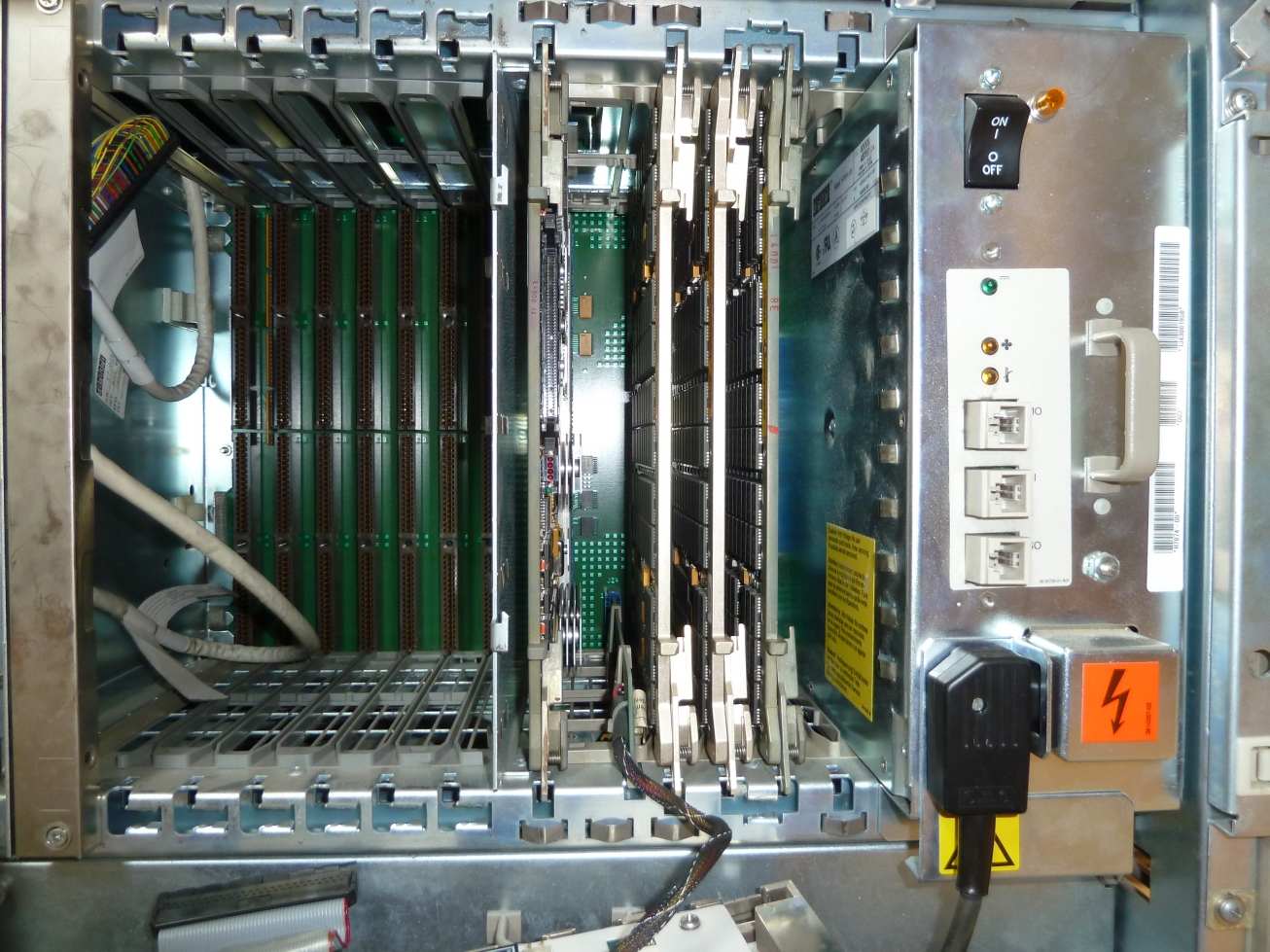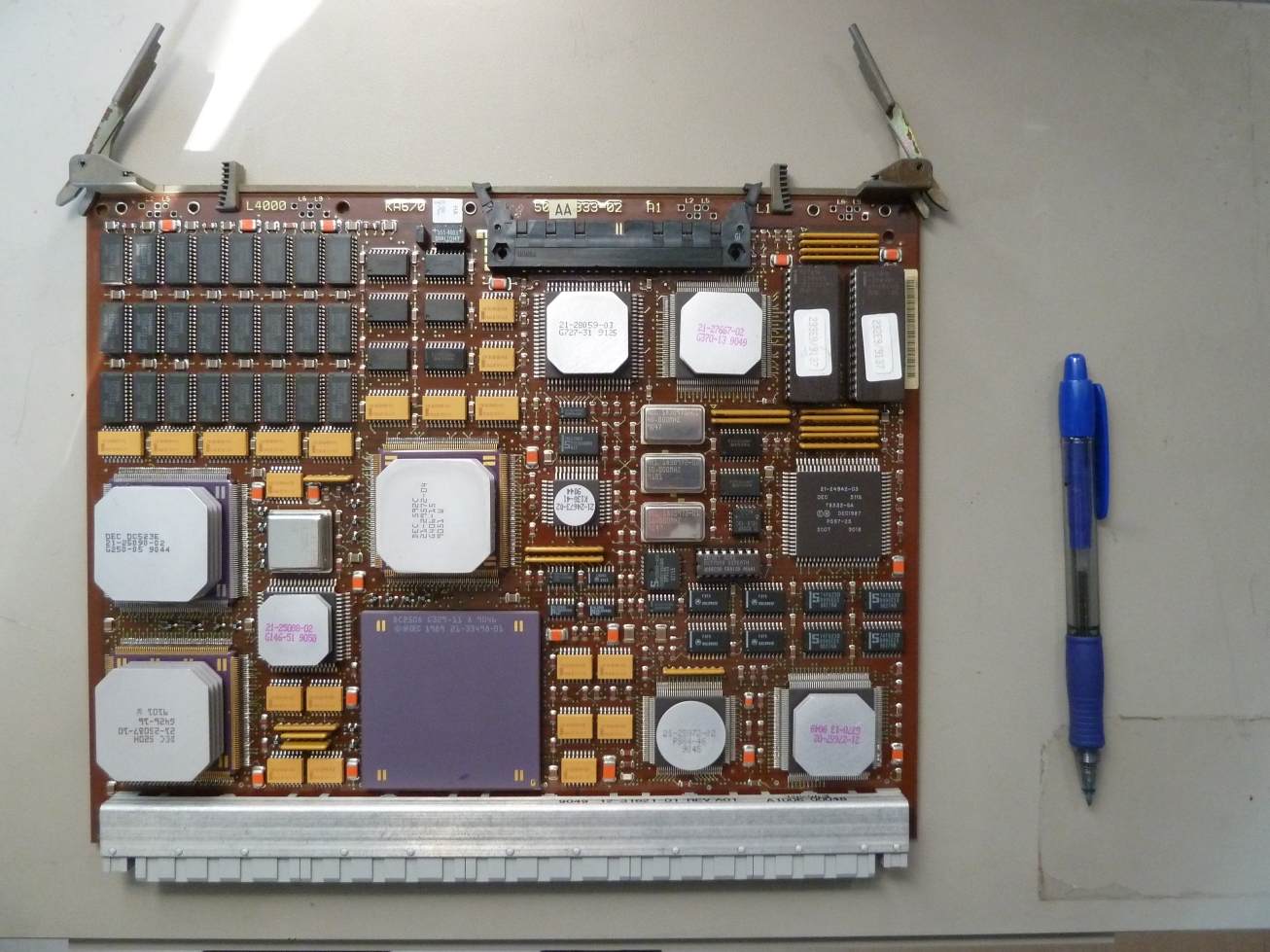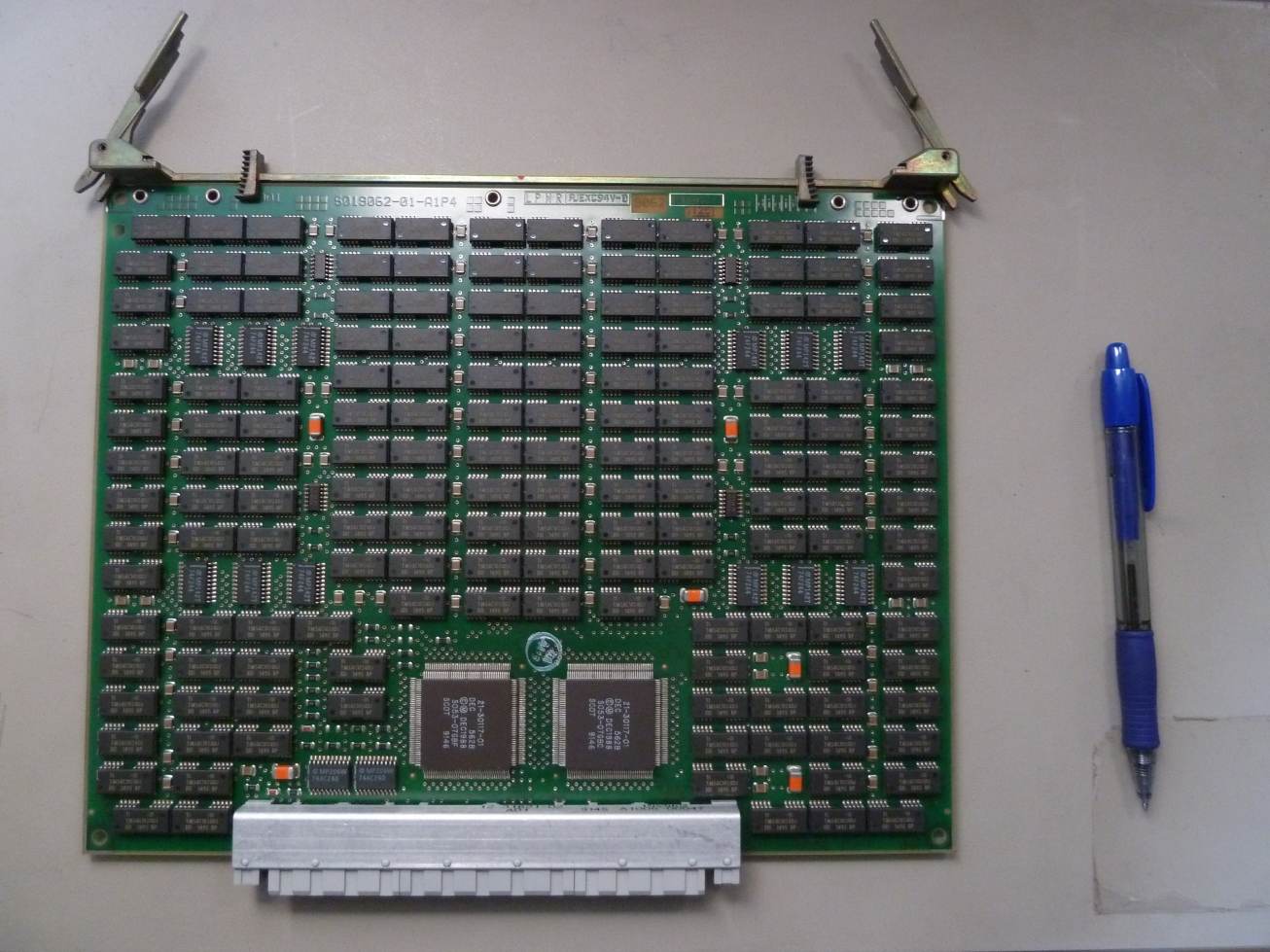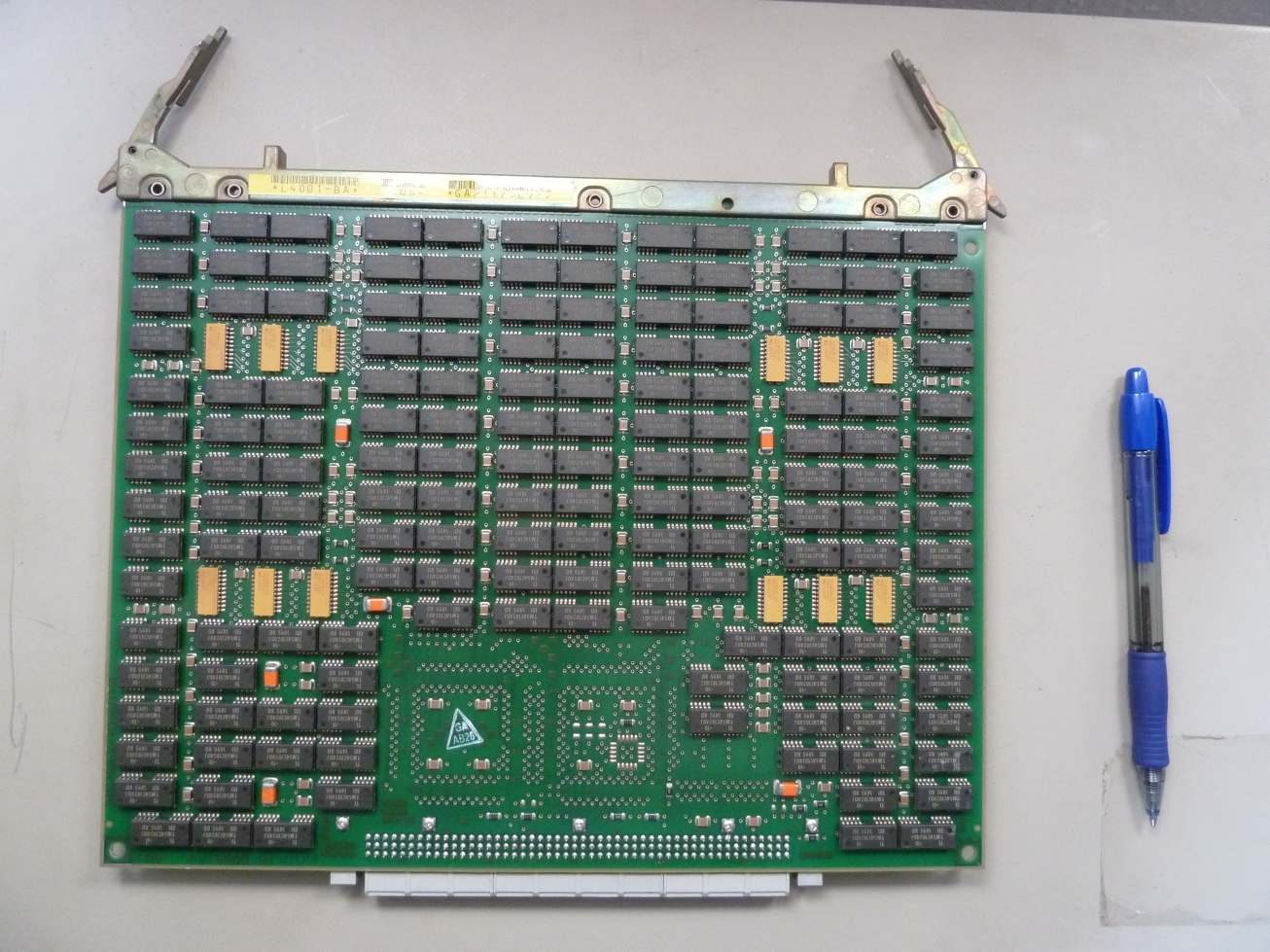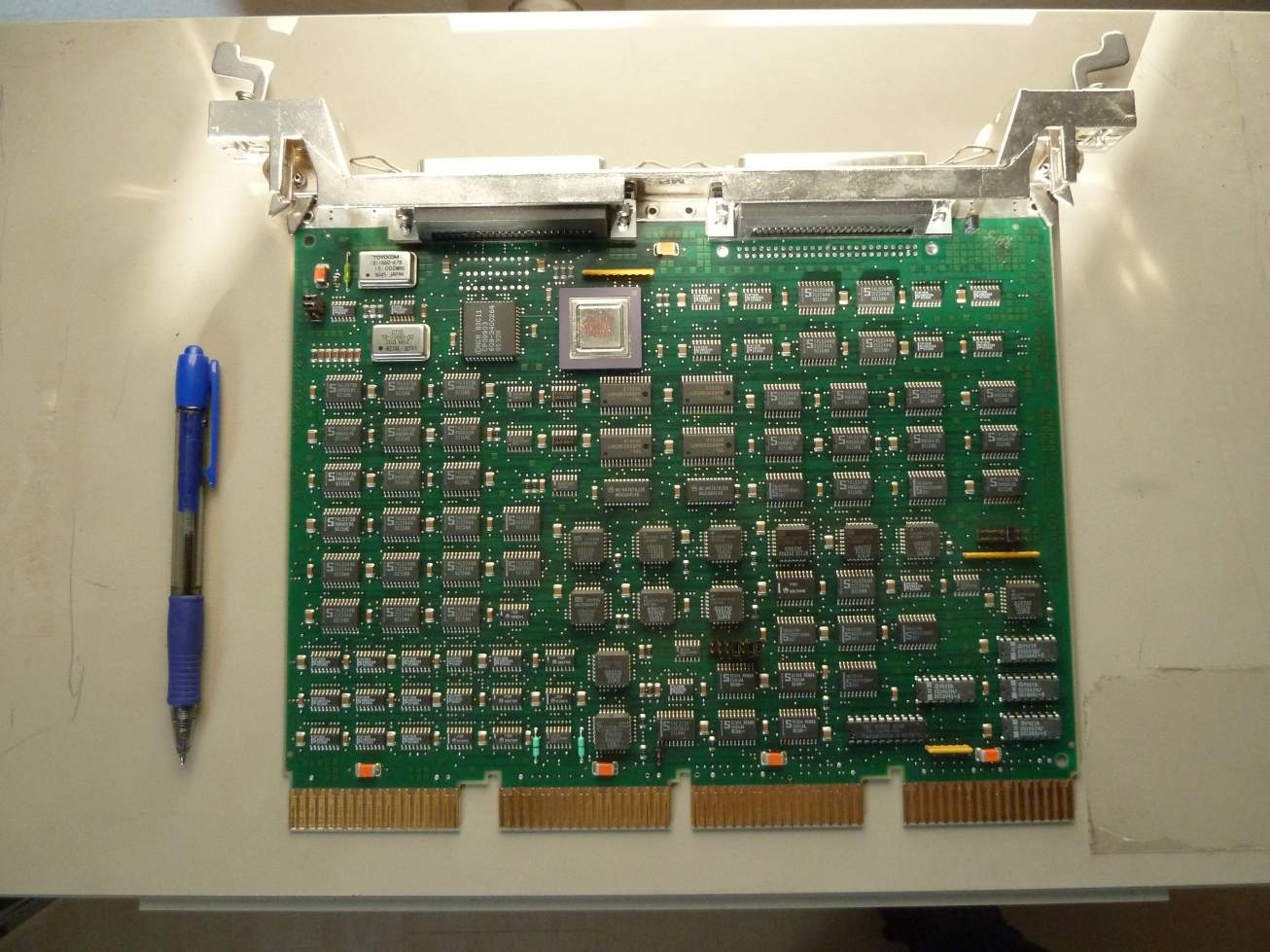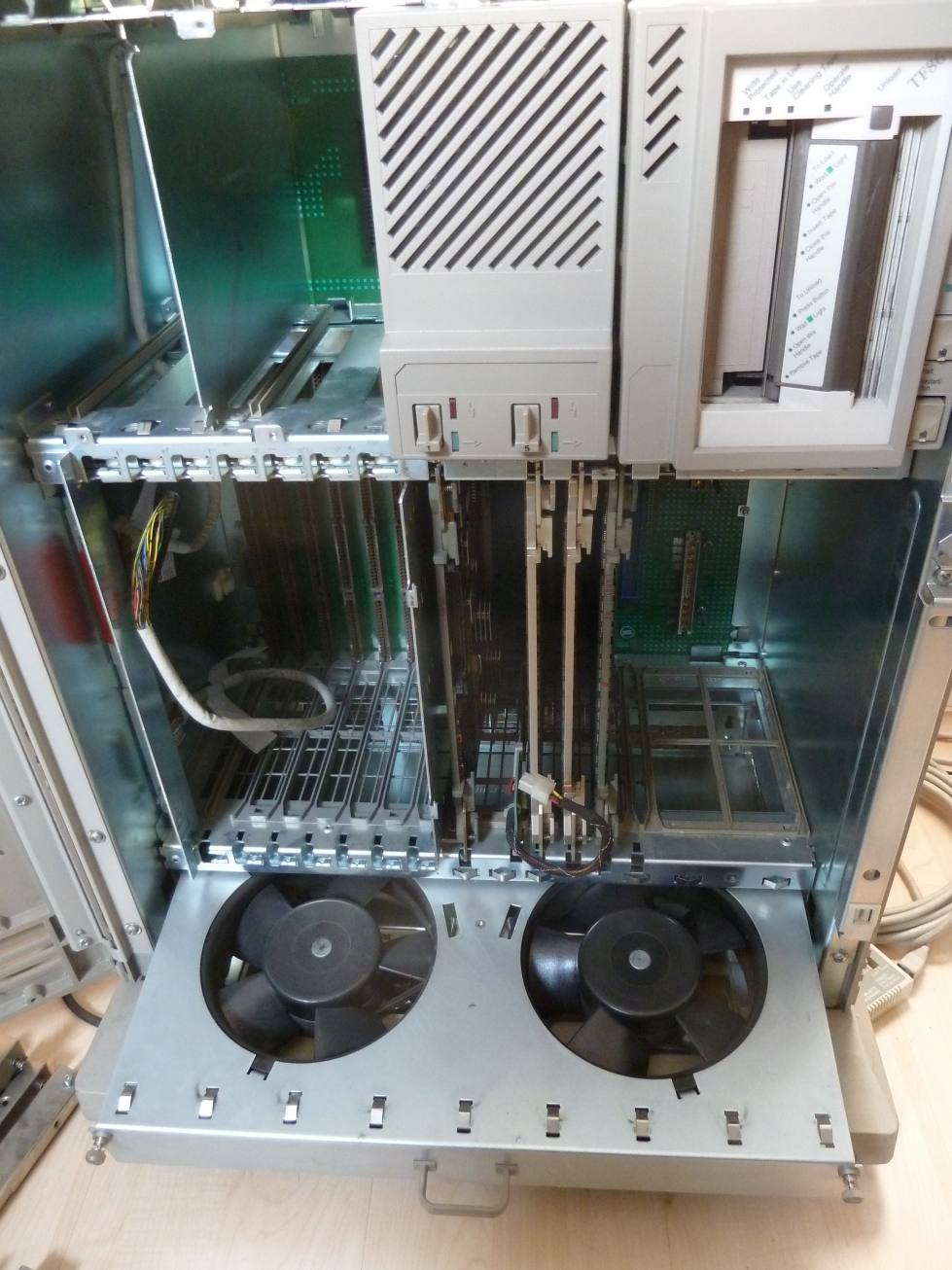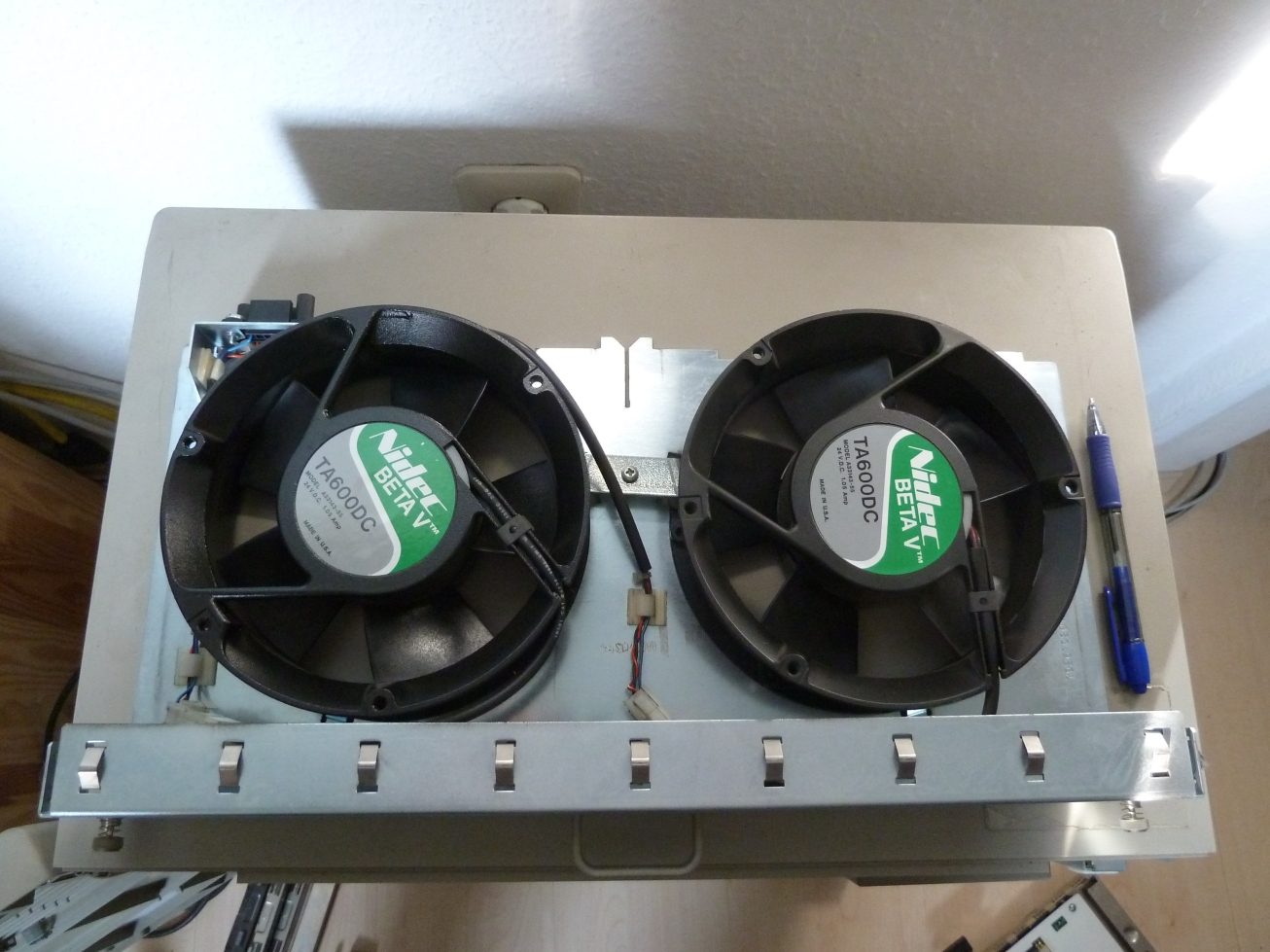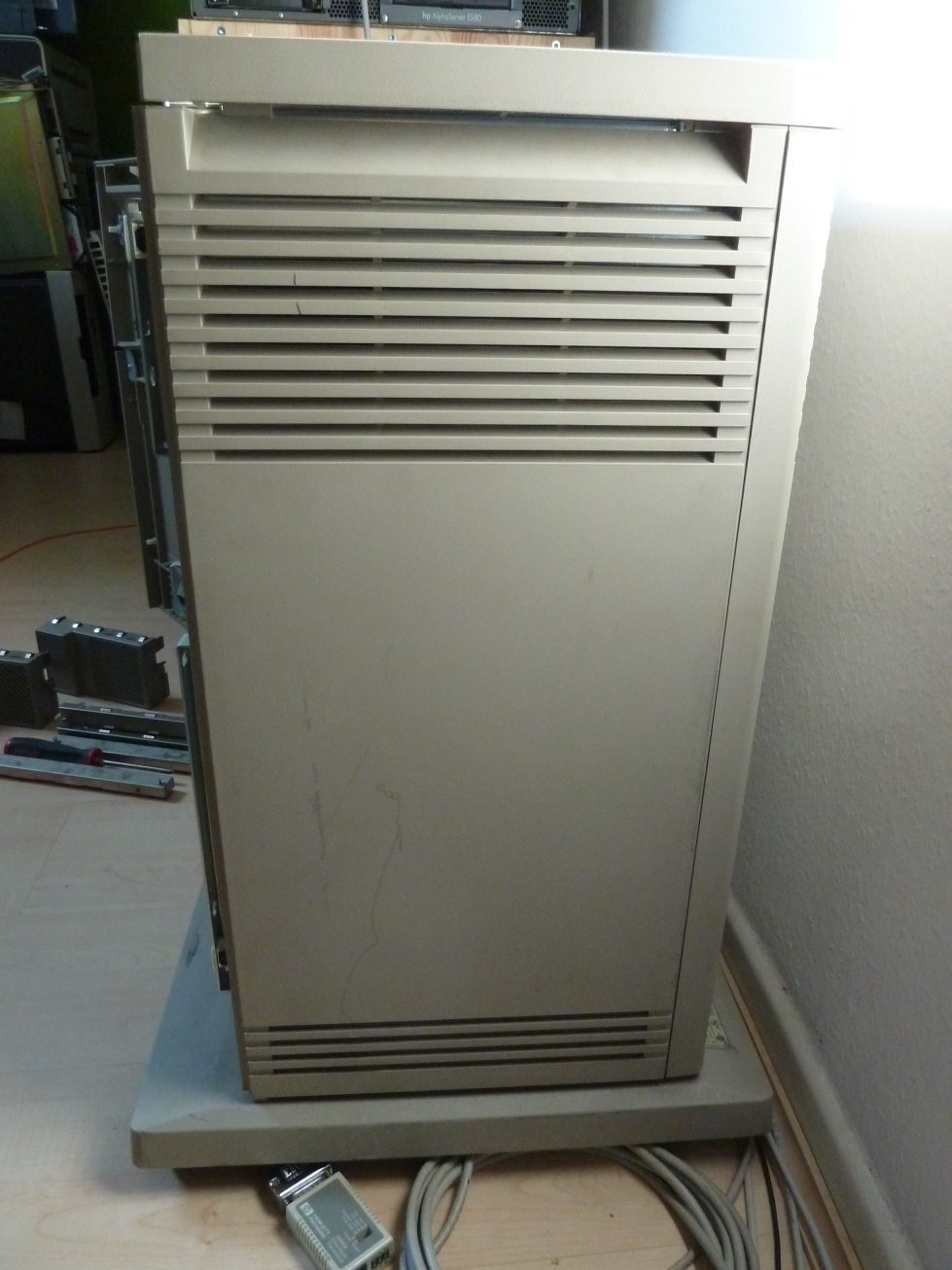Story:
I bought that VAX via ebay during 2004. Originally, two DSSI drives, two CXY08 controllers and a KZQSA controller (SCSI) were installed. On the system drive was installed a version of openVMS 6.x dating back from 1996. The seller was not able to make any comments about the origin of the system and how long it was used, so its story before 2004 remains unknown.
Between the date of acquisition in 2004 and 2010, this VAX was not in use, though I planned 3 years ago to use it as a webserver. In 2012, I finally had enough time to put a fresh installation of openVMS 7.3 on a DSSI drive. Moreover, I successfully installed a CMD controller, which serves as a DSSI-to-SCSI-bridge and conntected a SCSI-drive to the VAX for my user data.
The system runs openVMS 7.3 and webserver software called WASD (version 10) which hosts this website.
